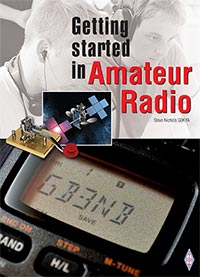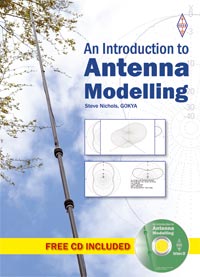 |
| Coronal holes appear as dark patches when viewed in extreme UV light via the SDO spacecraft. |
But what has been the cause?
HF conditions are generally worse in the summer months, with lower ionisation levels overall during daylight hours in the northern hemisphere.
This is believed to be due to a change in the chemical composition of the F layers of the ionosphere, with a predominance of molecular rather than atomic oxygen and nitrogen [1]. That is, atoms that are paired up have stronger bonds, which means it is harder for ionising radiation to liberate electrons. The actual process is quite complex and depends upon the ratios of [O]/[O2] and [O]/[N2]. The reaction is also temperature sensitive.
But over the past few months we had had an added problem – coronal holes (CHs) and coronal mass ejections (CMEs) from the sun.
A CH is an area on the sun where the corona is darker, colder, and has lower-density plasma than average. The magnetic field around a CH is also different – instead of returning to the surface, the magnetic field lines remain open and stretch out into space.
This can allow the charged solar wind to escape at high speeds, often up to 600-700 kilometres a second.
When a CH is positioned near the centre of the Earth-facing solar disk, especially when the “frozen in” magnetic field of the escaping plasma (Bz) points south, it can more easily couple with the earth's magnetic field.
The hot gasses can then flow to Earth as a solar wind high-speed stream (HSS), causing geomagnetic disturbances, including enhanced auroral activity and absorption at high latitudes. We can detect this geomagnetic storm as the Kp index rises to four or more.
Other effects can include a lowering of the critical frequency as the F layers are depleted causing the upper HF bands to close down. Higher noise levels may also be evident.
We can “see” CHs on the sun thanks to spacecraft. When viewed in the extreme ultraviolet light or X-ray spectrum they appear black due to their lower energy levels. The Solar Dynamics Observatory (SDO) has an X-ray imager called the Atmospheric Imaging Assembly (AIA) and its imagery can be found at www.solarham.net/latest_imagery/ – look for “AIA 211b W/ Coronal Holes”.
CHs can also be long lasting, their effects often being observed on several solar rotations (27 days) [2].
But the CH effects have also been augmented by CMEs. These are often linked to a solar flare and occur when the magnetic field within a sunspot breaks down allowing millions of tonnes of plasma to be ejected. This has similar effects to a CH as the plasma hits the earth, especially if the CME's magnetic field (Bz) is pointing south.
But why the sudden increase in CHs and CMEs recently?
Observation has shown that the sun is more unsettled after a peak in the sunspot cycle, with more frequent CMEs around solar maximum and CHs on the declining phase. The past few months have seen the decline of Cycle 24 – the least active in our lifetimes
In 2013 NASA spotted a CH that was at least 400,000 miles across – more than 50 Earths side by side [2]. And in March this year scientists saw one of the largest polar CH's they had observed in decades. It covered an estimated six- to eight-percent of the total solar surface [3].
CHs were first seen in images taken by astronauts on board NASA's Skylab space station in 1973 and 1974 [4]. So our data only go back two or three sunspot cycles, and we haven't got a lot to go on.
We know CHs can be long-lasting and we think they move closer and closer to the sun's poles near solar maximum.
But the best guess is that we will be stuck with CHs, CMEs and their effects for at least a few more years yet as we head towards sunspot minimum around 2020.
References:
1. “The Solar-terrestrial Environment”, J.K.Hargreaves.
2. www.nasa.gov/mission_pages/sunearth/news/gallery/20130618-coronalhole.html
3. www.nasa.gov/content/goddard/sdo-sees-two-coronal-holes
4. “The High-Latitude Ionosphere and it effects on Radio Propagation”, R.D.Hunsucker and J.K.Hargreaves.
Originally published in RSGB's RadCom magazine












